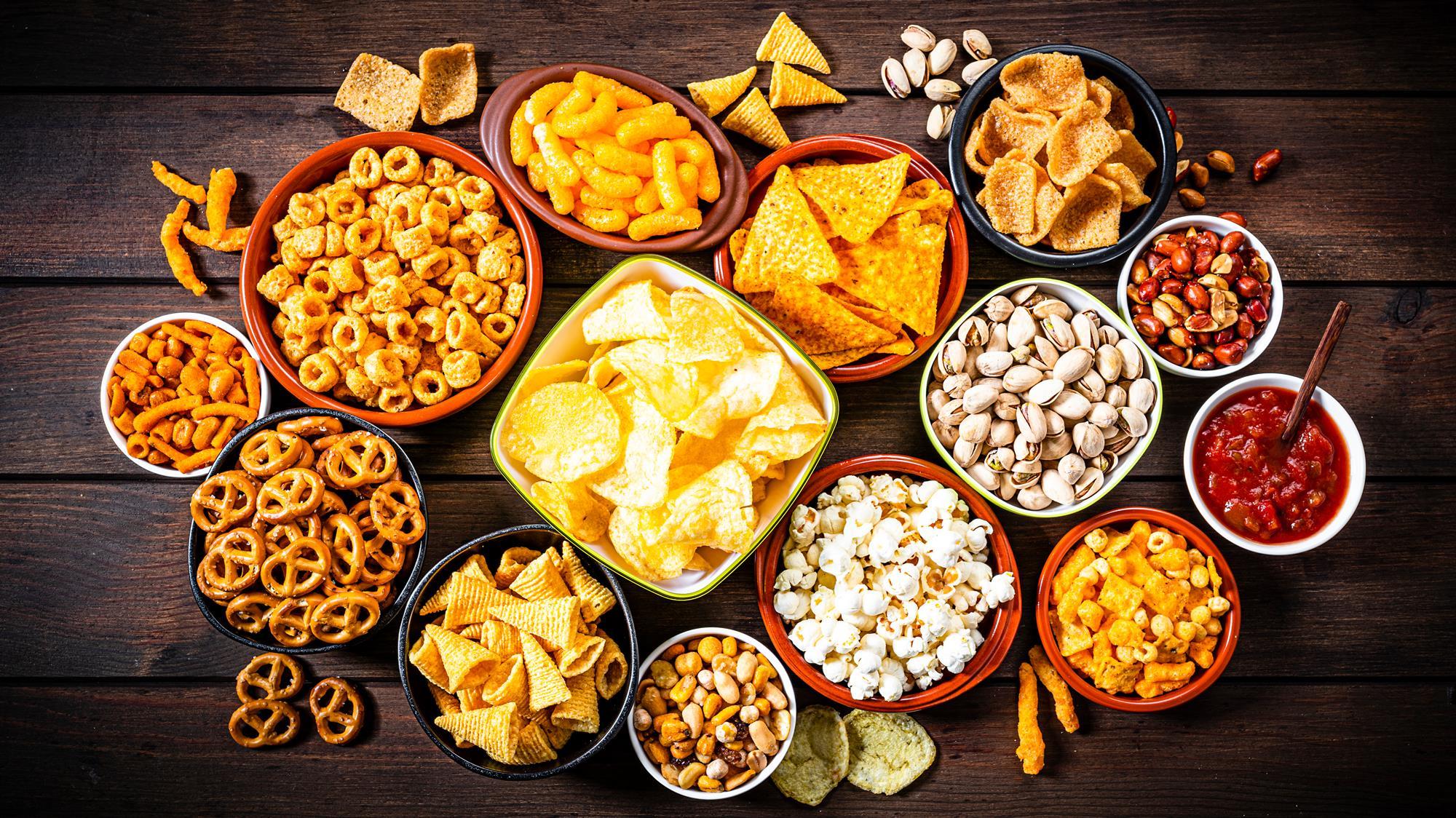Managing diabetes requires making conscious choices about the foods we consume, including snacks. Finding diabetes-friendly snack options that are both healthy and satisfying can be a challenge. However, with the right knowledge and planning, it is possible to enjoy delicious snacks while keeping blood sugar levels stable. In this article, we will explore five helpful pieces of information about diabetes-friendly snack ideas and healthy options for between meals. By incorporating these tips into your snack choices, you can maintain a balanced diet, promote stable blood sugar levels, and support your overall well-being.
1, Focus on balanced snacks.
When managing diabetes, it's important to choose snacks that help maintain stable blood sugar levels and provide sustained energy. A combination of protein, healthy fats, and fiber-rich carbohydrates can help achieve this balance. Here are some examples of balanced snacks for diabetes management:
Apple with a tablespoon of almond butter: This snack combines the natural sugars and fiber from the apple with the healthy fats and protein from almond butter, which helps slow down the absorption of sugar into the bloodstream.
Greek yogurt with berries: Greek yogurt is a good source of protein and contains less sugar compared to regular yogurt. Adding berries to it provides additional fiber and antioxidants. You can also sprinkle some nuts or seeds on top for added crunch and healthy fats.
Handful of nuts and seeds: Nuts and seeds, such as almonds, walnuts, chia seeds, or pumpkin seeds, are rich in healthy fats, protein, and fiber. They make for a convenient and satisfying snack that can help stabilize blood sugar levels.
Remember, portion control is important when snacking, especially for individuals with diabetes. Be mindful of the quantity and aim to incorporate a variety of nutrient-rich foods into your snacks. It's also a good idea to consult with a healthcare professional or registered dietitian for personalized advice and guidance regarding your specific dietary needs and diabetes management.
2, Emphasize whole foods.
Choosing whole, unprocessed foods is a great approach for managing diabetes and promoting overall health. Whole foods are typically nutrient-dense, lower in added sugars, unhealthy fats, and refined carbohydrates, making them beneficial choices for snacks. Here are some examples of whole food snacks for diabetes management:
Raw vegetables with hummus: Raw vegetables like carrot sticks, cucumber slices, bell pepper strips, or cherry tomatoes are packed with vitamins, minerals, and fiber. Pairing them with a serving of hummus adds protein and healthy fats, creating a balanced and satisfying snack.
Hard-boiled eggs: Eggs are a fantastic source of protein and healthy fats. Hard-boiled eggs are portable and can be prepared in advance, making them a convenient snack option. Sprinkle some salt, pepper, or herbs for added flavor.
Small portion of cheese with whole-grain crackers: Choose a moderate portion of low-fat cheese, such as mozzarella, cheddar, or cottage cheese. Pair it with whole-grain crackers to add fiber and slow down the digestion of carbohydrates. This combination provides protein, calcium, and sustained energy.
When opting for whole foods, it's important to consider portion sizes and individual dietary needs. Be mindful of your carbohydrate intake and choose whole grains, fruits, and vegetables as carbohydrate sources. Balancing your snacks with protein, healthy fats, and fiber can help regulate blood sugar levels and keep you satisfied between meals. As always, consulting with a healthcare professional or registered dietitian is recommended for personalized advice based on your specific health goals and needs.
3, Watch portion sizes.
Portion control plays a crucial role in managing blood sugar levels and overall health, even when choosing healthy snacks. Here are some tips to help you watch your portion sizes and avoid mindless snacking:
Use smaller plates or containers: By using smaller plates, bowls, or containers, you naturally limit the amount of food you can fit in them. This can help you control portion sizes and prevent overeating.
Measure out servings beforehand: Instead of eating directly from a large bag or container, take the time to measure out proper serving sizes. This can help you be more aware of how much you're consuming and prevent mindless snacking.
Read food labels: Pay attention to the serving size indicated on food labels and use measuring cups or a food scale to ensure you're sticking to the recommended portions.
Plan and prepare snacks in advance: Pre-portioning snacks into individual servings can be a helpful strategy. You can use small containers or zip-lock bags to have ready-to-go snacks that are already portion-controlled.
Practice mindful eating: Slow down and pay attention to your eating habits. Focus on the flavors, textures, and enjoyment of your snacks. Mindful eating can help you recognize when you're full and prevent overeating.
Remember, portion sizes can vary depending on the individual and their specific dietary needs. It's important to work with a healthcare professional or registered dietitian who can provide personalized guidance on portion control and help you create a balanced eating plan for managing diabetes effectively.
4, Choose low-glycemic index foods.
Choosing snacks with a low glycemic index (GI) is a smart approach for managing blood sugar levels and promoting overall health. Low GI foods are digested and absorbed more slowly, resulting in a slower and more gradual rise in blood sugar levels. Here are some examples of low GI snacks:
Raw vegetables: Raw vegetables such as carrots, cucumbers, celery, and broccoli have a low GI and are packed with essential nutrients, fiber, and water content. They make excellent crunchy and low-calorie snacks.
Berries: Berries, including strawberries, blueberries, raspberries, and blackberries, have a relatively low GI. They are also rich in antioxidants, vitamins, and fiber, making them a healthy choice for satisfying your sweet cravings.
Nuts and seeds: Nuts and seeds, such as almonds, walnuts, chia seeds, and flaxseeds, are low in carbohydrates and have a low GI. They provide healthy fats, protein, and fiber, which contribute to satiety and blood sugar regulation.
It's important to note that the GI of a food can be influenced by various factors, including ripeness, cooking methods, and food combinations. Pairing low GI foods with sources of protein, healthy fats, and fiber can further help slow down the digestion and absorption of carbohydrates, promoting better blood sugar control.
However, it's essential to remember that the GI is just one factor to consider when planning a healthy diet for diabetes management. Portion sizes, overall nutrient composition, and individual dietary needs should also be taken into account. Working with a healthcare professional or registered dietitian is recommended for personalized guidance and support in managing your diabetes effectively.
5, Plan ahead and be prepared.
Planning ahead and being prepared with diabetes-friendly snacks is a key strategy to avoid unhealthy options and make nutritious choices when hunger strikes. Here are some tips to help you plan and prepare snacks in advance:
Make a snack plan: Take some time to plan out your snacks for the week. Consider your schedule, preferences, and nutritional needs. This will help you stay on track and make healthier choices.
Prep fruits and vegetables: Wash, peel, and chop fruits and vegetables in advance so they're ready to eat when hunger strikes. Store them in portion-controlled containers or resealable bags for convenience.
Portion out snacks: Take larger packages of snacks, such as trail mix or nuts, and divide them into smaller, individual portions. This makes it easier to control portion sizes and grab a healthy snack on the go.
Pack snacks for convenience: Keep diabetes-friendly snacks in your bag, desk, or car, so you always have healthier options readily available. This helps prevent relying on vending machines or fast food when hunger strikes.
Explore grab-and-go options: Look for convenient, pre-packaged diabetes-friendly snacks available in stores, such as single-serving Greek yogurt, cheese sticks, or individual nut butter packets. These can be great options when you're short on time or traveling.
By planning and preparing snacks in advance, you create an environment that supports making healthier choices and helps you stay on track with your diabetes management goals.
Remember to choose snacks that are balanced, low in added sugars, and incorporate a combination of protein, healthy fats, and fiber-rich carbohydrates. Consulting with a healthcare professional or registered dietitian can provide personalized guidance on snack planning and help you make informed choices based on your individual needs and preferences.
Choosing diabetes-friendly snacks doesn't mean sacrificing taste or satisfaction. By focusing on balanced snacks, emphasizing whole foods, watching portion sizes, opting for low-glycemic index foods, and planning ahead, you can enjoy a variety of delicious and nourishing snacks while effectively managing your diabetes. Remember, it's important to consult with healthcare professionals or registered dietitians to create a personalized diabetes management plan that suits your specific needs. By making informed snack choices, you can take control of your health, maintain stable blood sugar levels, and promote overall well-being. So, start incorporating these helpful snack ideas into your routine and enjoy the benefits of a diabetes-friendly diet.





Comments
Post a Comment